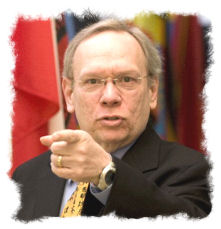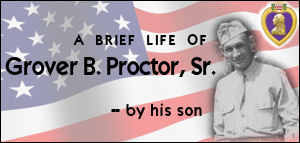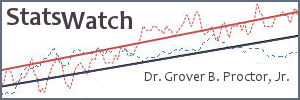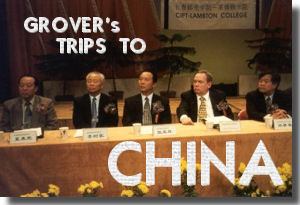|
When the gunshots in Dealey Plaza ended the presidency of John F. Kennedy on November 22, 1963, they started a controversy that is as strong 20 years later as it was on that day — who killed JFK and why? The subject has spawned theories and inflamed tempers, and is one of the most written about events in U.S. history. Yet, even with the multiple millions of written and spoken words, the American public is still uncertain, though very opinionated, about what really happened that day. Here is how the controversy has unfolded over the past two decades.
From Lone Nut to Conspiracy The week after the assassination, newly-installed President Lyndon Johnson convinced Chief Justice Earl Warren to head a blue-ribbon commission to investigate the assassination and to issue a report that would answer an anguished nation's questions. The so-called Warren Commission issued its report nearly a year later. It concluded that a left-wing loner named Lee Harvey Oswald had fired three shots at the presidential motorcade, killing Kennedy and seriously wounding Texas Governor John Connelly. Further, the report said another loner, Dallas strip-joint owner Jack Ruby, spontaneously shot and killed Oswald while Oswald was in the custody of Dallas police. But even before its findings were published, a growing body of critics was condemning virtually every method used and conclusion reached by the commission. Chief among the critics at that time was New York attorney Mark Lane, who had been asked by Oswald's mother to represent her son's interests during the official investigation. Lane maintained that virtually all of Oswald's civil and judicial rights were violated while he was in custody. He also claimed the body of evidence being amassed by governmental and private investigators did not make a strong case against Oswald. Lane's book Rush to Judgment, which he wrote as a legal brief for Oswald's defense, would become a bible for critics of the "lone gunman" theory over the next 10 years. Between 1964 and 1975, critic after critic broke new ground as they mounted their own investigations of new leads and pieced together old evidence. They pointed to a film of the assassination which showed that Kennedy did not react physically as if he had been shot from behind — Oswald's purported location. Instead, he reacted in an opposite manner. The critics also quoted doctors who treated Kennedy in the emergency room who said he had been hit from the font, not the rear. They quoted eyewitnesses who heard more gunshots than Oswald could have fired. Debates, formal and casual, raged over these seeming discrepancies and the critics were adamant and compelling. By the late 1960s, polls showed that only a minority still believed Oswald had acted independently.
New Investigations By the mid-1970s, evidence was unearthed that would startle even the conspiracy buffs. The Senate Intelligence Committee in 1975 revealed that during the Kennedy administration the Central Intelligence Agency had contracted with organized crime members to assassinate Cuban leader Fidel Castro. This information led many to speculate that Castro may have been using Oswald and others in Dealey Plaza to effect revenge. Some, however, were looking closer to home for conspirators. U.S. Senator Richard Schweiker, a member of the Intelligence Committee, formed a sub-committee to look into the possibility of the involvement of American intelligence agencies in the murder. Said Schweiker after the investigation, "We don't know what happened, but we do know that Oswald had intelligence connections. Everywhere you look with him there are the fingerprints of intelligence." It was this remarkable conclusion, fears of a Castro plot, and mounting public pressure which led Congressional leaders to do what the critics had been urging all along — reopen the case. In 1978, the House of Representatives Select Committee on Assassinations was ordered to reinvestigate both the John F. Kennedy and Martin Luther King murders, and to have a report by 1980. Rocked by internal wrangling in its early days, the committee turned over little new ground until its last year of existence. The committee did produce testimony from a "highly reliable" witness who claimed to have seen Oswald with a highly-placed member of the CIA just weeks before the investigation. Also, the committee's Chief Counsel gave credence to a report that, after he was arrested, Oswald attempted to make a call to Raleigh, N.C., to a former U.S. Army counterintelligence agent. Combined, the information was startling, if inconclusive, as evidence of a conspiracy. But the critics rejoiced most loudly when the committee hired outside experts to analyze a tape recording made during the time of the assassination. The tape conceivably held, amid the pops and crackles, the sounds of gunfire in Dealey Plaza. After conducting an on-site re-enactment and a battery of sophisticated acoustical tests on the tape, the experts concluded that there was at least one other gunman firing from in front of the President that day. The House Committee finally concluded that elements of American organized crime (the Mafia) had motive, means, and opportunity to kill Kennedy. The committee's Chief Counsel even published his own book, Organized Crime Assassinated JFK: The Definitive Story. The case for conspiracy, it seemed, had been proved.
So Who, Then, Were the Conspirators? But, of course, the controversy has not died. The theories persist, and their proponents with them. There still is a vocal element which defends the original findings of the Warren Commission and maintains that Oswald was the lone gunman. These people find themselves up against a staggering number of disparate theories who claim the assassination was everything from a Mafia hit, to a Soviet KGB executive action, to a CIA coup d'etat. Perhaps the largest number of critics today maintain that some elements of American intelligence worked with elements of the mob and members of the anti-Castro Cuban population to kill the President. Others, like the House Committee's chief counsel, protest that all of the major evidence points to the assassination as a hit by individual members of organized crime. There are still other theories which require more time to digest. Several recent books have tried to prove that Oswald was either a conscious or unwitting agent of the KGB. One book, riveting in its logic and presentation of evidence, concludes that Kennedy's body was altered before the official autopsy in order to eliminate any traces of a conspiracy. And, of course, there is the grocery store tabloid press, which has sensationalized Kennedy's death and attributed it to everyone and everything from French terrorists to suicide.
Will We Ever Know? The most often asked question about the assassination, after "Who killed JFK?" is "Will we ever know?" If the confusion and the controversy of the last 20 years are any indication, then perhaps we will not. The trail is cold now; many who have been involved are dead; and governmental interest is waning. But, as Chaucer said, "Murder will out."
|
|
| PAGES & SITES OF INTEREST TO VISIT | |
| THESE ARE NOT PAID ADS. WE JUST SUGGEST YOU WILL LIKE THE SITES. | |
|
RETURN TO TOP |
| All content ©1995-2014. All rights reserved. |






